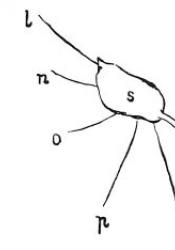The Vatican Library
The Vatican library still holds the first edition of Trattato Della Pittura (A Treastie on Painting), which is a published collection of Leonardo Da Vinci's notes on the science of painting. The contents of Trattato Della Pittura were originally written between 1469-1519, organized in the early 1500s, translated into a manuscript in the early 1600s, and was finally published in 1651 by Raffaelo du Fresne. The nature of Leonardo da Vinci's notes made it difficult to organize his work for publication. His former student, Francesco Melzi, sorted da Vinci's notes and worked on copying them from the reverse mirror-image style da Vinci wrote in. After Melzi's death, his son, Orazio took da Vinci's notes into his possession but did not work on publishing them. Instead, Orazio distributed many of da Vinci's journals, some of which have not been found since (“Elmer Belt Library of Vinciana”).
Raffaelo du Fresne obtained Trattato Della Pittura and finalized a manuscript to be published in the Vatican Library. In 1817, this publication was re-published into a modern form and widely dispersed.
The presence of da Vinci's work in the Vatican Library symbolizes is societal impact and significance. Works published in this library are largely considered to be works of art.
Sources
“Elmer Belt Library of Vinciana.” Elmer Belt Library of Vinciana UCLA Library, www.library.ucla.edu/special-collections/discover-collections/collecting....
“Rome Reborn: The Vatican Library & Renaissance Culture The Vatican Library.” The Vatican Library - Rome Reborn: The Vatican Library & Renaissance Culture | Exhibitions - Library of Congress, 8 Jan. 1993, www.loc.gov/exhibits/vatican/vatican.html.
Parent Map
Coordinates
Longitude: 12.454732600000

